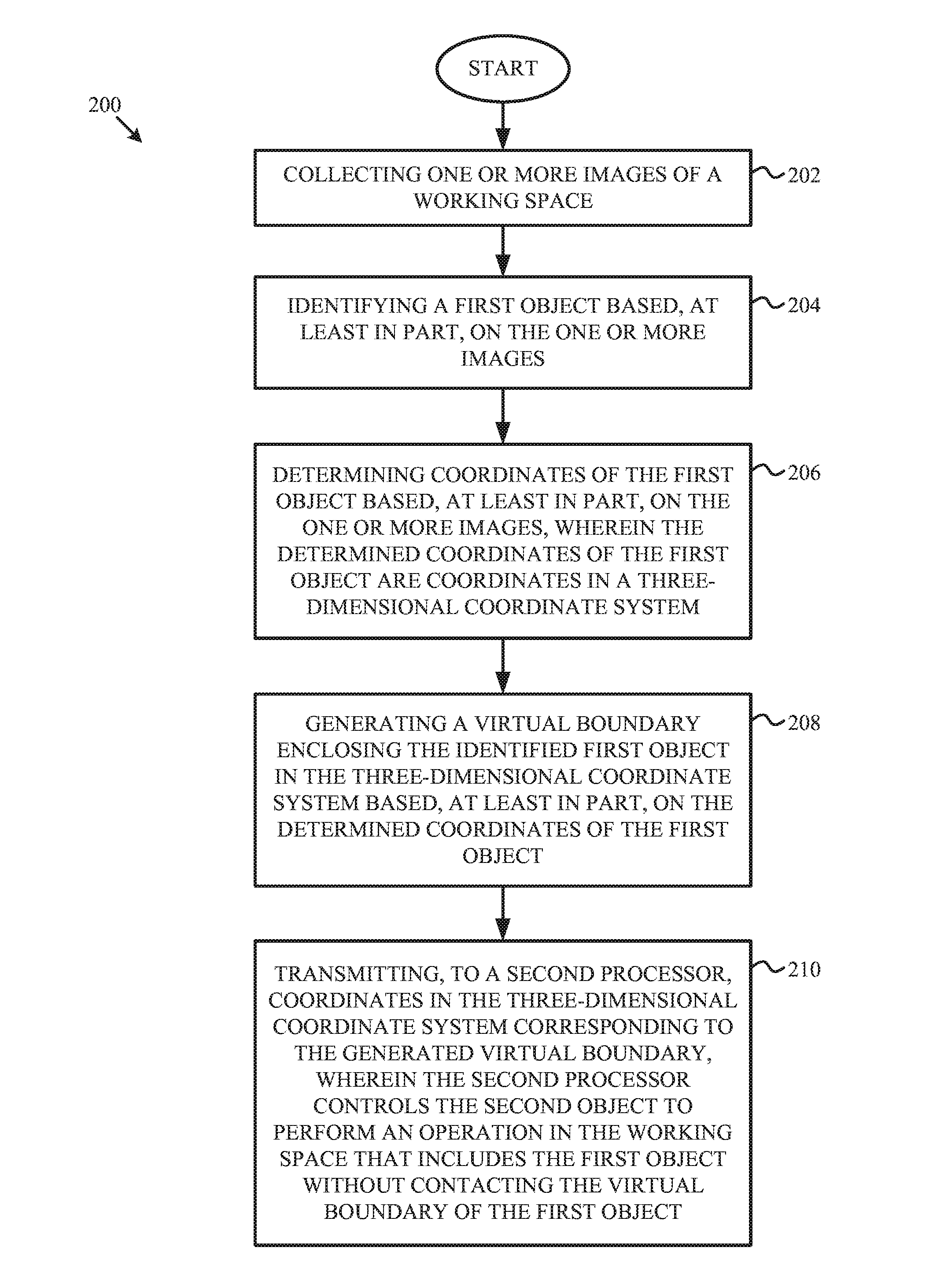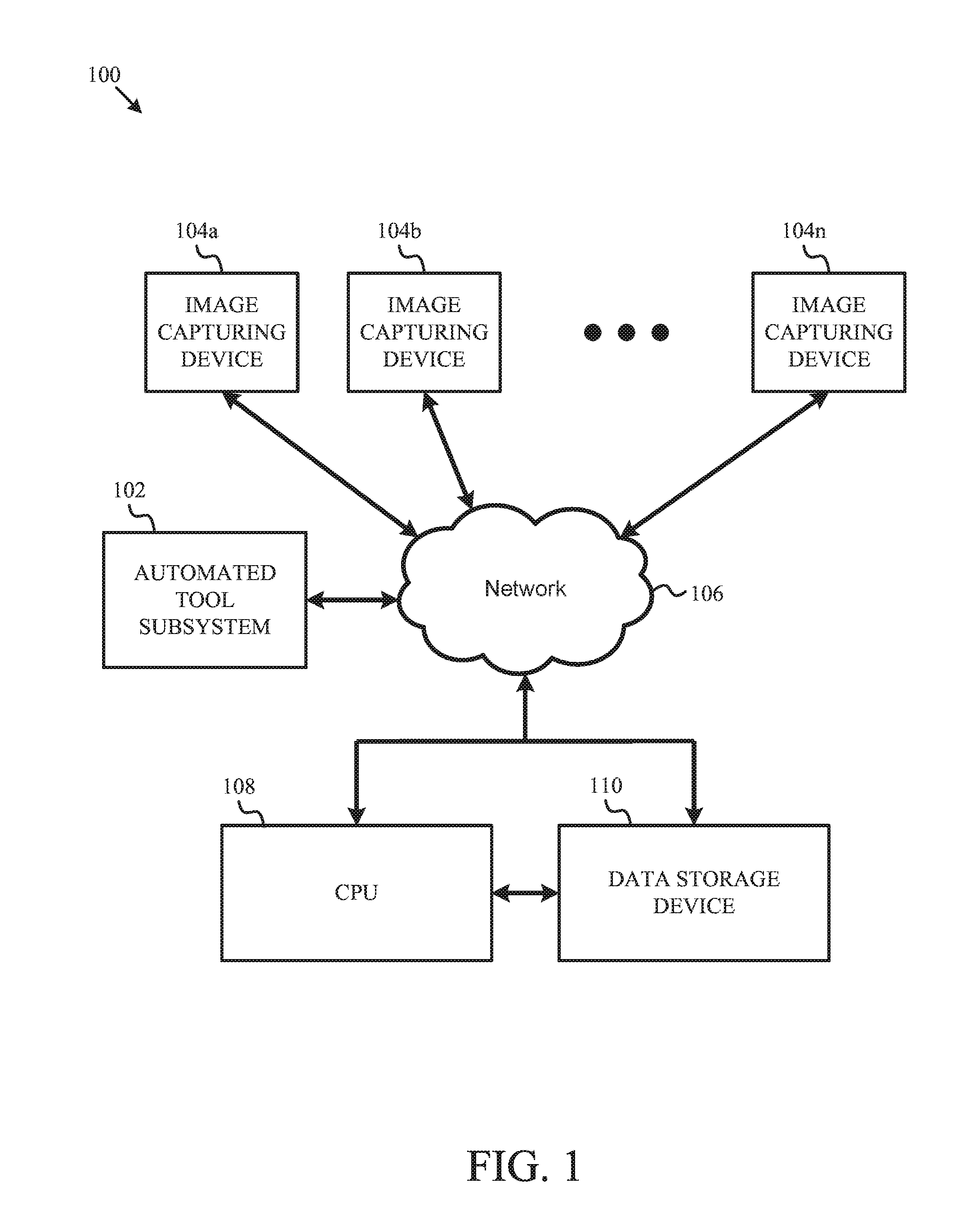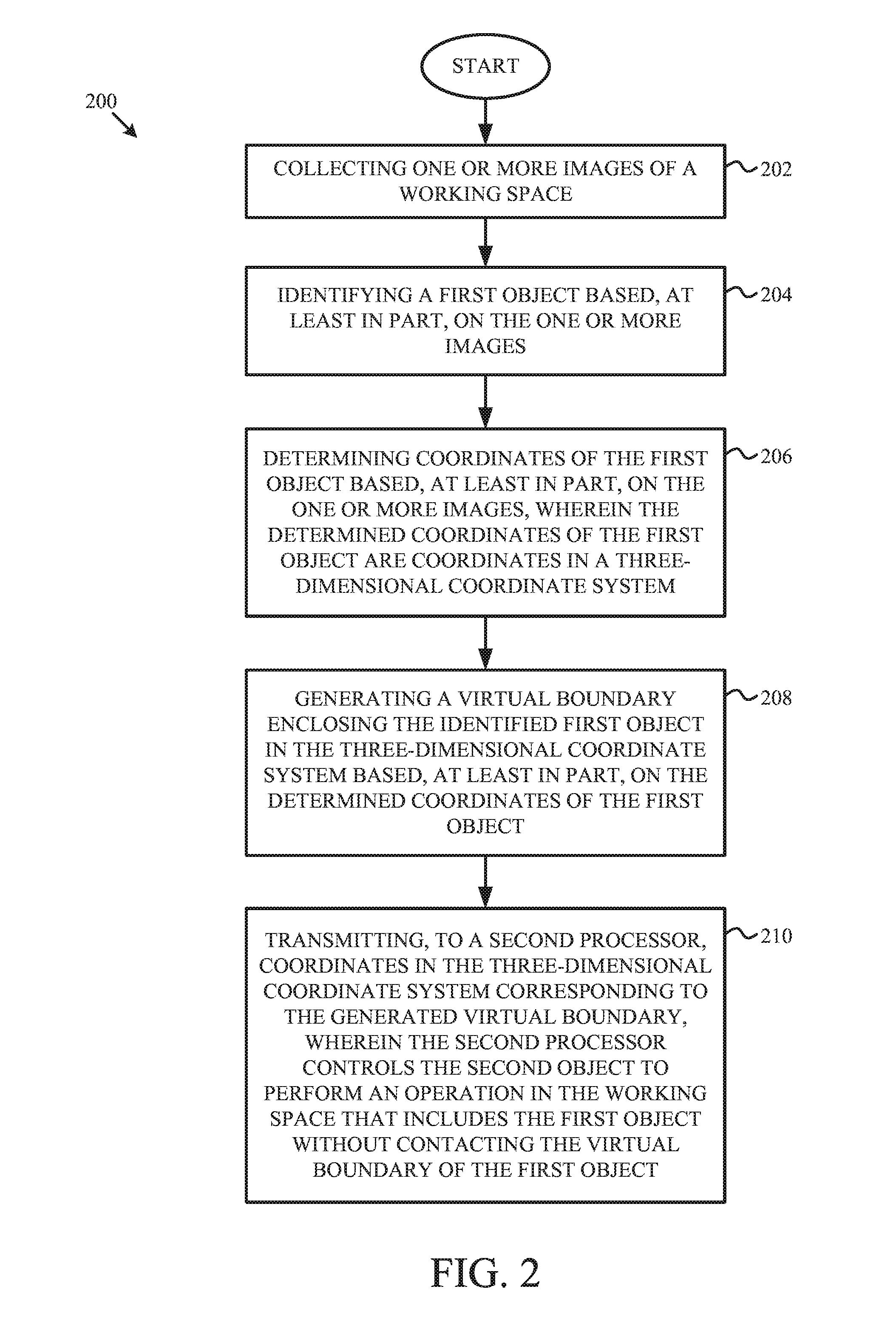Computer vision collision avoidance in drilling operations
a collision avoidance and computer vision technology, applied in the direction of image generation, instruments, borehole/well accessories, etc., can solve the problems of unfulfilled automation, tool subsystems that pose new challenges, and avoidance of automated tools presenting an unnecessary distraction to the drill hand, so as to improve the conventional collision avoidance system
- Summary
- Abstract
- Description
- Claims
- Application Information
AI Technical Summary
Benefits of technology
Problems solved by technology
Method used
Image
Examples
Embodiment Construction
[0016]FIG. 1 is a schematic block diagram illustrating a computer vision collision avoidance system according to one embodiment of the disclosure. A computer vision collision avoidance system 100 may include an automated tool subsystem 102, one or more image capturing devices 104a-104n, a network 106, a central processing unit (CPU) 108, and a data storage device 110. In some embodiments, the automated tool subsystem 102 may implement collision avoidance. For example, the automated tool subsystem 102 may include one or more processors to control one or more tools on a drill floor in order to prevent the one or more tools on the drill floor from colliding with one another.
[0017]According to an embodiment, the one or more image capturing devices 104a-104n may be configured to capture one or more images of a working space. In some embodiments, an image capturing device, such as any one or more of image capturing devices 104a-104n, may be a still image capturing device, such as a camera...
PUM
 Login to View More
Login to View More Abstract
Description
Claims
Application Information
 Login to View More
Login to View More - R&D
- Intellectual Property
- Life Sciences
- Materials
- Tech Scout
- Unparalleled Data Quality
- Higher Quality Content
- 60% Fewer Hallucinations
Browse by: Latest US Patents, China's latest patents, Technical Efficacy Thesaurus, Application Domain, Technology Topic, Popular Technical Reports.
© 2025 PatSnap. All rights reserved.Legal|Privacy policy|Modern Slavery Act Transparency Statement|Sitemap|About US| Contact US: help@patsnap.com



